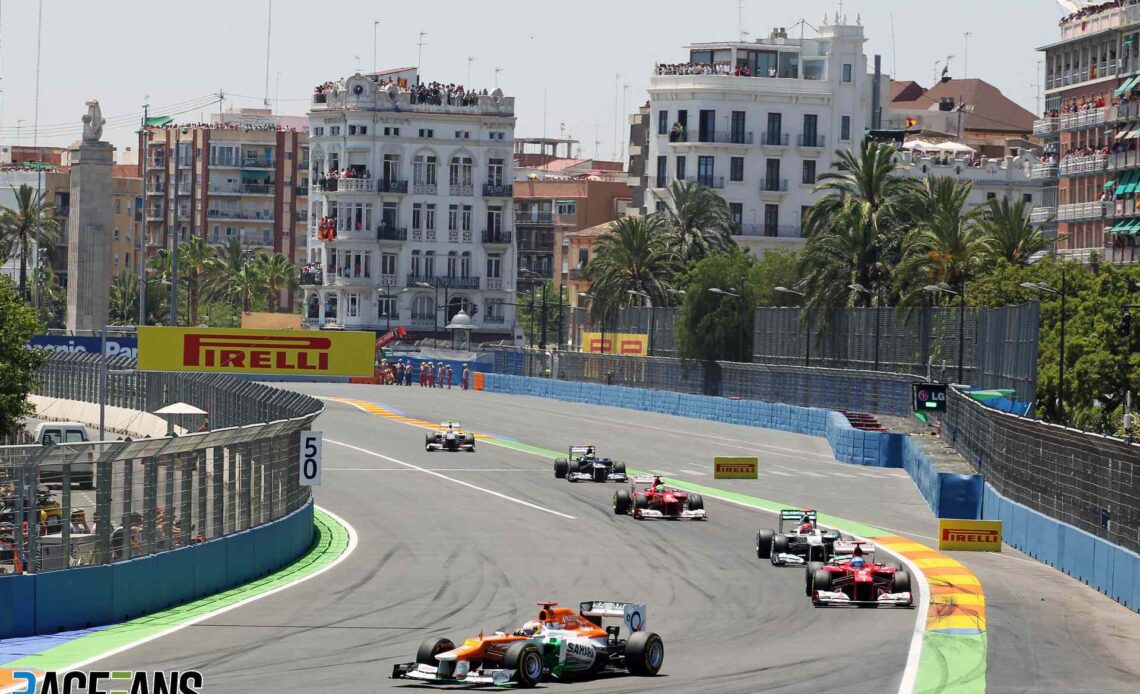The Spanish Grand Prix is one of the most enduring events on the Formula 1 calendar. It has been held 53 times and F1 has raced in the country on 60 occasions.
However its circuits, for one reason or another, have generally failed to inspire great affection.
From 2026 the Spanish Grand Prix will move to a new street circuit in Madrid. It has a low bar to clear if it is to be considered an improvement over Spain’s last temporary F1 track.
Lewis Hamilton summed up the views of many when RaceFans asked him at last year’s Spanish Grand Prix what he thought of the race potentially moving to a street track in Madrid: “As long as it’s not like Valencia was, which wasn’t the most enjoyable track to drive…”
The Valencia Street Circuit, which F1 introduced to typical fanfare in 2008 but left just four years later, was a little-loved venue. It distinguished itself mainly by making Spain’s other F1 track at the time, the Circuit de Catalunya, appear considerably better by comparison.
Although F1 say they are keeping their options open, there is a serious chance Madrid’s arrival will spell the end for Catalunya as a grand prix venue. Spain has other F1-standard permanent tracks – Motorland Aragon further to the west, Jerez in the south and Valencia’s permanent Ricardo Tormo course – but F1 has opted to add another street circuit.
As always, the motivation is chiefly financial. The same reasoning brought F1, unsuccessfully, to Valencia. Will Madrid fare any better?
It will be the fourth street circuit F1 has raced on in Spain. The first, Pedralbes, held a pair of races in the fifties.
Its simple layout gives the lie to the claim F1 didn’t race on simplistic street tracks before Liberty Media came along; nor, indeed, that it didn’t perform in the service of dubious regimes before Bernie Ecclestone. The 6.3-kilometre Pedralbes track featured just five corners of note, and a straight of vast length and width named after the dictator Franco, whose regime killed – or ‘disappeared’ – hundreds of thousands.
After two races in 1951 and 1954 – won respectively by Juan Manuel Fangio in an Alfa Romeo and Mike Hawthorn in a Ferrari – F1 left Spain. It returned at Jarama, a permanent track outside Madrid, in 1968.
Jarama was one of a clutch of compact ‘aerodrome’ tracks which sprang up in the sixties and seventies. It paled in comparison to older venues and many which were to follow….
Click Here to Read the Full Original Article at RaceFans…

